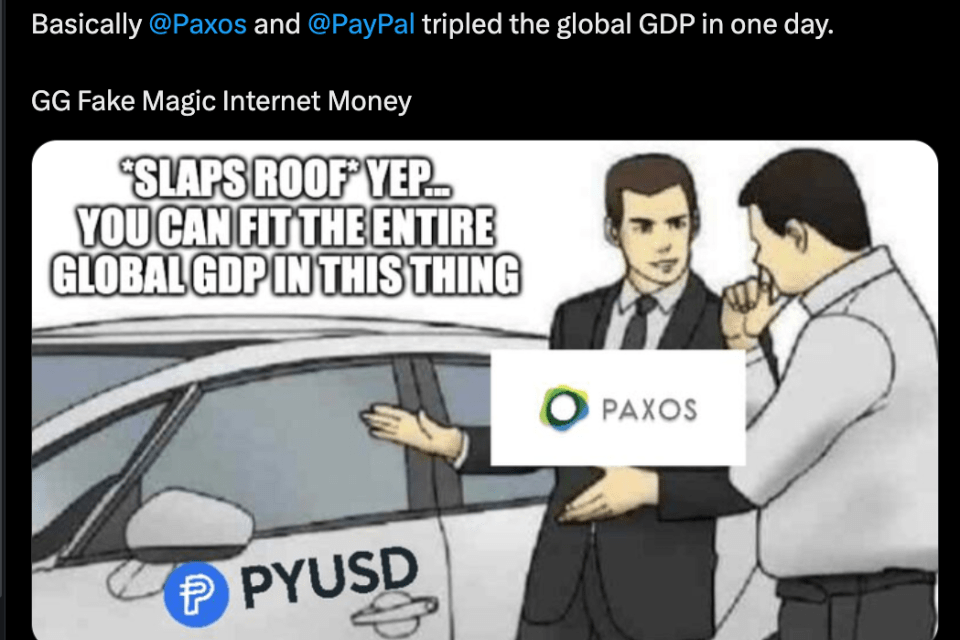Ripple is a goofy business. For more than a decade now, the company has held vast quantities of magic beans known as XRP, which it dumps onto the market at regular intervals. It’s not clear why anyone needs these magic beans, but people buy them anyway, and that has made Ripple very rich—so rich that this week it casually spent $1 billion to buy a treasury management company called GTreasury. The question is how much longer Ripple can keep its magic bean factory humming.
Before looking closer at Ripple’s future prospects, though, it’s helpful to know a little more about one of the crypto industry’s oldest—and oddest—companies. The firm opened up shop in 2012 as something called OpenCoin. The company soon after created XRP, which stood out from other early cryptocurrencies like Bitcoin and Litecoin. Instead of creating a mining system to dribble new tokens out slowly, XRP’s creators just waved a wand and created the whole supply at once—100 billion of them to be exact.
XRP gained value since it is one of the first cryptocurrencies, and because Ripple’s early team consisted of very highly regarded blockchain technologists. But no one has ever been able to make a strong case to explain the purpose of XRP. Bitcoin is the original digital gold and Ethereum is the backbone of smart contracts, but the most salient feature of XRP has always been an army of online fanatics screaming “to the moon!”
This doesn’t mean Ripple hasn’t been trying. The company’s longtime CEO, Brad Garlinghouse, is a charismatic pitchman who has spent over a decade trying to charm the financial sector. For a time, around 2015, he persuaded big banks to experiment with XRP’s ledger—which by all accounts works very well—to sling money around the world. The banks, though, grew wary of becoming dependent on Ripple’s infrastructure, and so Garlinghouse leaned into branding XRP as a “bridge currency” that, with the help of money makers, could streamline remittance transfers in secondary financial corridors. Then stablecoins came along, and it’s been back to the drawing board.
This situation explains Ripple’s latest gambit: Buying not just GTreasury but also, earlier this year, a prime brokerage and a stablecoin platform. Taken together, this amounts to the company telling the corporate sector: “Hey, come sign up for our tools that will help you navigate the growing intersection of TradFi and crypto.”
It’s not a bad idea. But as anyone who’s been part of an acquisition knows, the theory may be fine, but tapping into the promised synergies is harder than it looks. In this case, will the GTreasury executives—who until recently spent their days dealing with forex and traditional corporate finance stuff—fit into Ripple’s crypto culture? And will Ripple executives be able to resist trying to stuff XRP into services that work fine without it? The good news is that Ripple has plenty of time to find out.
Right now, Ripple is sitting on somewhere around 40 billion XRP, currently priced around $2.45, which it releases in small batches each month through a carefully designed escrow system. So far, so good, as for whatever reason, people keep buying the stuff. But even with the XRP Army at its back, “to the moon” narratives can only go on so long and Ripple will have to show it can build a real business.
Jeff John Roberts
jeff.roberts@fortune.com
@jeffjohnroberts
DECENTRALIZED NEWS
The spoils of crypto victory: A new investigation by seven reporters confirms that, yes, the Trump family has gotten very rich off its crypto ventures, earning over $1 billion in pre-tax profits and amassing much more in unsold holdings. (FT)
Beast mode: The most popular YouTube star Jimmy Donaldson aka Mr. Beast is getting into fintech, filing a trademark for “mobile app and online services for a range of banking, financial advisory, crypto exchange, and other services.” (Business Insider)
An investment of a different Stripe: Jared Kushner’s Thrive Capital and other mainstream venture firms moved into crypto in a big way with a $500 million investment into Tempo, the Stripe-backed blockchain project led by longtime Paradigm VC Matt Huang. (Fortune)
So much for Uptober: In a month typically marked by double digit gains, crypto markets took another end-of-week battering with Bitcoin trading around $106,000 on Friday—its lowest level since July. (WSJ)
Pig butcher busted: In the largest forfeiture in history, the Justice Department announced it has seized $15 billion in Bitcoin from criminals in Cambodia who oversaw a massive pig-butchering operation that used forced labor to conduct phone scams aimed at seniors and lonely people. (CNBC)
MAIN CHARACTER OF THE WEEK
Stuart Isett for Fortune
JPMorgan Chase CEO Jamie Dimon told Fortune’s editor-in-chief that he’s stopped ranting about Bitcoin publicly because he’s tired of the death threats. But he’s more into blockchain than ever. (See the clip here.)
MEME O’ THE MOMENT

@MELOWILD
Paxos goofed up big time this week, accidentally minting $300 trillion worth of PayPal’s PYUSD stablecoin. Fortunately for the stablecoin issuer, it quickly spotted and reversed the mistake, meaning the primary consequence for Paxos and PayPal was getting dragged on social media for a day—although a New York regulator did say it was aware of the incident.
This story originally appeared on Fortune

